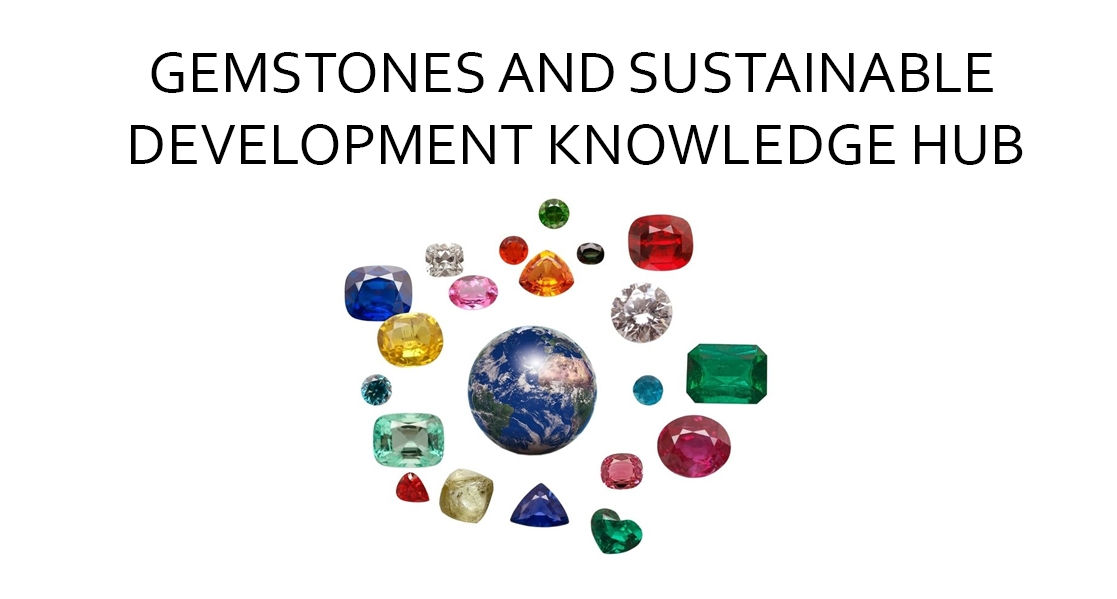Disclosure: This article is reproduced with permission from the IGC 2017 Namibia proceedings (see: http://www.igc-gemmology.org)
GROWTH STRATEGY FOR THE NAMIBIAN JEWELLERY INDUSTRY AND COLOURED GEMSTONE VALUE CHAIN
Harmony. K. Musiyarira, Ditend Tesh, Mallikarjun Pillalamarry, Nikowa Namate
Department of Mineral and Process Engineering, Namibia University of Science and Technology, Windhoek, Namibia
Abstract
With its abundant resources in diamonds and coloured gemstones, Namibia has been unable to develop an internationally competitive coloured gemstone and related industry due to the fact that the sector’s value chain does not function in a way that maximises value addition. An uncoordinated supply of equipment to stone centers without a broader coloured stone sector growth strategy has constrained the growth of the sector. The main aim of this study was to establish the essential building blocks for the sector growth for the coloured gemstones and related industries. Three independent but complementary methodologies were used which included a desktop study, baseline study and data analysis and report writing. Relevant senior officials in key government ministries, public institutions, private sector organisations, small scale miners and key individuals in the mining sector were consulted through interviews. The linking up of the baseline study with the utilisation of the logical framework approach coupled with the SWOT analysis were essential techniques used in the formulation of a set of seven strategic interventions. The main thrust in formulating the interventions was to move the coloured stone and jewellery industry in Namibia from a raw resources export focused sector to a value-added and competitive brand on the global market. These strategic interventions are expected to have a significant impact on productivity and income. A holistic approach was used in coming up with these initiatives. The seven strategic interventions included conducting geological assessments to identify new deposits and quantify the existing ones, investing in education and training, improving exploration and mining practices and improving the local processing and jewellery manufacturing activities and creating an enabling environment for the sector to flourish.
Introduction
With its abundant resources in diamonds and coloured gemstones, Namibia is poised to have a significant competitive advantage in this sector. The vision of the Namibian government is to expand the range and value of coloured gemstones and jewellery products, processed within Namibia, while curbing illicit flows of the coloured gemstones and simultaneously securing the maximum benefit for its citizens, through value addition. However, there has been a fragmented approach to address the challenges facing the coloured gemstone industry in Namibia. Various government arms and donor organisations have utilised piecemeal approaches in the past in trying to make improvements on productivities across the value chain.
These attempts have brought very little results. The delivery of equipment to gemstone centers without a broader coloured gemstones sector growth strategy has not contributed to the development of the sector (Musiyarira et al. 2016). The lack of structured and formalised coordination between different government ministries has cost the government money which could have been put to good use by combining efforts across various ministries. Namibia has been unable to develop an internationally competitive coloured gemstone and related industry due to the fact that the sector’s value chain does not function in a way that maximises value addition. The overall objective of this study was to establish the essential building blocks for the sector growth for the coloured gemstones and related industries.
Figure 1. General value chain for coloured gemstones.
Through consulative forums coupled with field visits, and interviews of the key stakeholders, there was an unequivocal agreement that selling raw stones is counterproductive to Namibia’s aspiration under Vision 2030 and as per the National Development Plans (NDP4). Looking at the value chain processes and the potential for more value addition, it was agreed among the stakeholders that areas of processing, jewellery manufacturing, marketing and trading are the least utilised and hold the most potential in many respects. In light of this realisation, it was put forward that these are the general promising steps of the value chain selected for the coloured gemstones sector to be targeted for further examination. In order to better deal with the benefits or the lack thereof of value addition within the chain, it will be convenient to do an analysis through product groups which are classified in no particular order of preference into three viz: (i) finished gemstone products, (ii) collector pieces and (iii) finished jewellery products.
The following strategic interventions were identified as key in ensuring sustainability of the small mining sector in Namibia; conducting geological assessment to identify new deposits and quantify the existing ones, improving exploration and mining practices, investing in education and training, creating an enabling environment and improving the sector governance and strengthening the sector organisation and supporting the infrastructure. It was found that the main catalyst for the growth of the coloured stone sector is to consider all the unit chains/processes within the value chain as being part of the systems which need to be improved at each and every stage for the common good of the whole sector (holistic approach). These interventions and their outcomes are summarised in Figure 2 below.
Figure 2. Strategic interventions and their outcomes.
References
Kaplinsky, R., Morris, M., 2001. A handbook for value chain analysis. Ottawa: International Development Research Centre.
Musiyarira, H., Tesh, D., Namate, N., Pillalamarry, M., 2016. Establishing the essential building blocks for the Semi-precious industry. Proceedings of the Mining Communities 2016 Conference, 5 to 8 June 2016, Vancouver, Canada.



